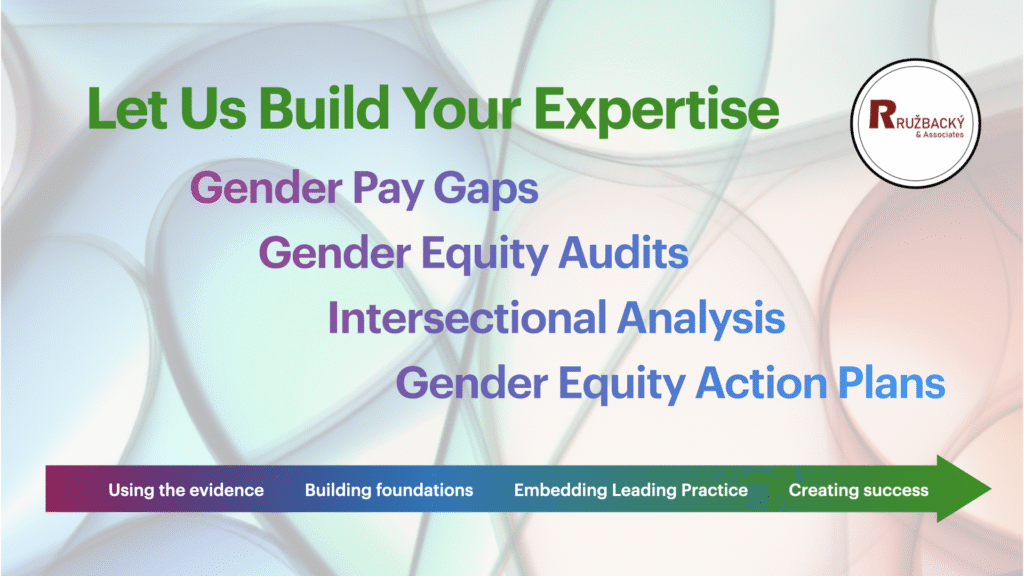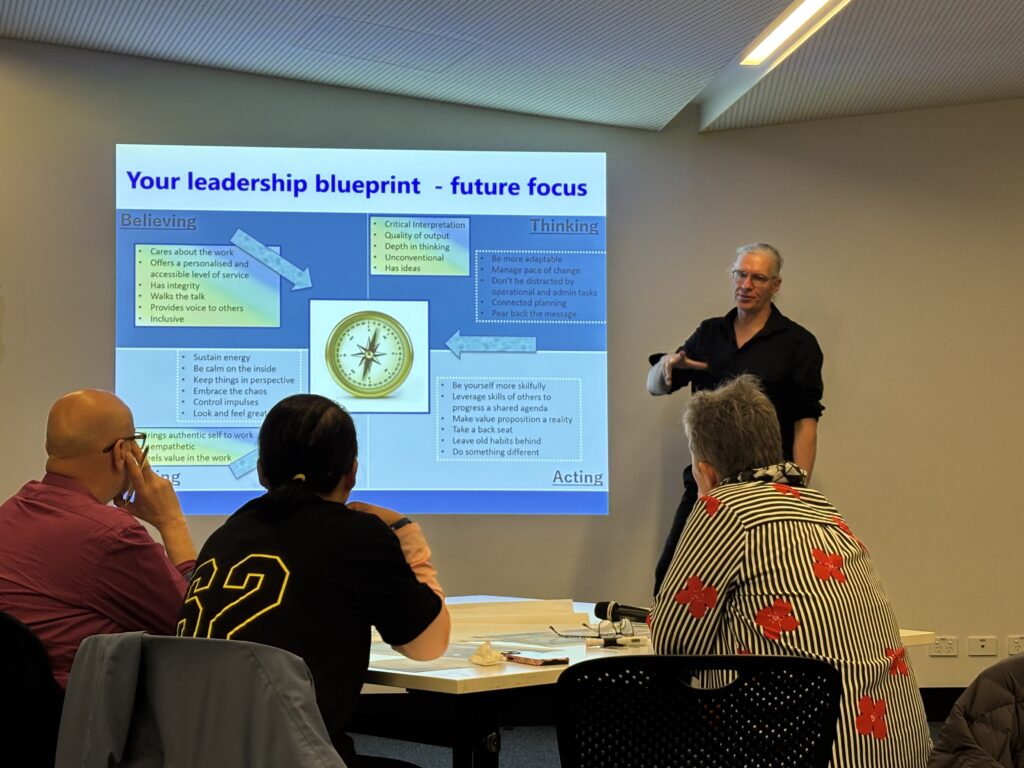Gender Pay Gap
A practical, hands-on approach to interpreting, analysing and responding to your gender equality data. What is driving workplace gender inequality and gender pay gap?
Duration: Half day (co-facilitated)
Workshop learning areas
Learning about the GPG
• Understanding the gender pay gap (GPG) and its drivers.
• Cumulative effects and causal relationships – what to look for in your organisation?
• Understanding how occupational and industrial segregation impacts gender pay gaps differently.
Learning how to undertake the analysis
• Inclusive data sets – including employee life cycle data integration.
• Applying an intersectional lens to your analysis.
• Identifying patterns and anomalies in a sea of data.
• Insights – what is the data saying? How data is connected.
Learning how to reduce or manage your GPG
• Data to insights to evidence-based actions to reduce your GPG.
• Meeting the new WGEA minimum standard.
• Developing and using your Employer GPG Context Statement strategically for maximum impact.
• Communicating with influence.
This program is for
• Diversity, equity and inclusion (DEI) leaders
• Human resources professionals
• Organisations preparing for WGEA compliance reporting
• Organisations wanting to go beyond compliance reporting to learn about leading practice initiatives and build meaningful action plans
• DEI executive sponsors and champions
• HR payroll professionals.
Our experienced facilitators will share their unique perspectives, insights and skills with you and provide you with simple, practical tips and templates that you can use immediately in your workplace.

Diversity, Equity and Inclusion Principles to Practice
Objective: This program will strengthen your understanding of Diversity, Equity & Inclusion – principles to practice
Duration: 90 minutes to half day
Foundational Diversity, Equity & Inclusion
Definitions, Principles and Language
Personal and Organisational Drivers
Competitive Advantage: Benefits for Leadership & Business
DEI Indicators – Exploring Risk and Gap analysis
Evidence Based Practice, Indicators & Measurement
Data trends and analysis
Data – key observations and suggestions
Building the evidence base for your organisation
Identifying strengths and gaps
Consulting and co-design with impacted groups (obligations and responsibilities)
Effective business analytics, data interrogation and the nuances of interpretation
Some examples of DEI data, analysis and action
DEI Strategy- Evidence to Action & ROI
Bringing organisational vision, culture, maturity, values propositions, and evidence together to inform strategic priorities and actions
Program of work could include…
Resourcing and commitment to sustainability
Time horizons, stage gates, risks and accountabilities
Diversity Nudges: Immediate actions you can take
Employee Experience
DEI Maturity Model recheck – have we moved?
What might success look like?
Leadership commitment to 3 actions to increase workplace inclusion – local, personal, immediate
Understanding Discrimination, Bullying and Harassment – Prevention and Practice
Objectives Develop understanding of legalities around bullying, harassment, discrimination and EEO. Address how employees may address issues and instances where they experience or observe such incidents occurring.
Duration : Half Day (Co-facilitated)
Foundational Work – Discrimination, Harassment, Bullying
Terminology
Legal framework
Protected attributes
Covert/subtle behaviours and micro-aggressions
Quiz – testing the learning
Strategies for resolving complaints and concerns
Understanding the complaints process
Informal and formal processes
Understanding overlapping complaints and jurisdiction
Managers and supervisor responsibilities
Two Case Studies – principles to practice
Understanding and embedding good practice
Identifying factors that lead to unreasonable behaviour
Potential bias in mainstream employment situations
Creating a culture where raising concerns are encouraged
Creating and embedding bullying and harassment free environments
What initiatives and actions contribute to cultural and psychological safety?
Leadership commitment to 3 actions – local, personal, immediate (or program of work)

Gender Pay Gap Collective
Discussion points from the from the 2024 GPG Collective.
